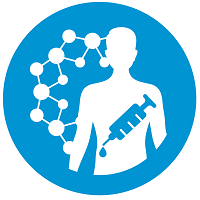Preclinical, Clinical, and Translational Sciences
Symposium: New Frontiers of Drug Development Through the Use of Non-Animal Models and Imaging
Advancing Drug Development and Regulatory Toxicology with AI-Supported PBPK, IVIVE, and Computational Modeling
Monday, November 10, 2025
9:30 AM - 10:00 AM CT
Location: 225 AB

Shagun Krishna, PhD (she/her/hers)
Director, Toxicology, PCRM
Physicians Committee for Responsible Medicine
Durham, North Carolina
Speaker(s)
In addition to humane considerations, there is a growing awareness of the limitations of in vivo animal studies in describing drug toxicity in human patients or for predicting the ADME of novel therapeutic approaches. Novel alternative methods (NAMs) enable investigators to implement human-translatable test methods that replace animal testing and address variables that can alter in vivo drug performance. In this hot topic session, we explore state-of-the-art uses of NAMs to facilitate the development of therapeutics for human and veterinary patients. The three speakers (UGa, and Precision One Health, Texas A&M, and Physicians Committee for Responsible Medicine) will cover the following three aspects of NAMs: 1) Use of AI-Supported PBPK, IVIVE, and Computational Modeling. This talk will explore the role of AI and machine learning in advancing drug development and regulatory toxicology through the integration of NAMs. Additionally, the talk will highlight how AI-driven data analysis enhances PBPK modeling and IVIVE by optimizing parameter estimation, automating data integration, and improving human-relevant predictions. The discussion will also cover the role of computational approaches in regulatory toxicology, including their use in risk assessment and decision-making.; 2) Testing and Qualification of Microphysiological Systems Through Academia-Industry-Government Collaboration. The rapid explosion of models in the microphysiological systems space and persistent publicity have placed high expectations on both the industry and regulatory agencies to adopt these models in safety and efficacy evaluations of compounds. Some end-users became early adopters, whereas others have taken a more cautious approach because of the high cost and uncertainties of the value that microphysiological systems may have. The TEX-VAL Consortium, established through competitive funding from NIH-NCATS assists academic developers of tissue chips to understand whether their technology is ready to be transferred to the end-users. After 4 years of NIH support, it evolved into a public-private collaboration focused on testing and qualification of various promising platforms before they would find their way into member organization’s laboratories. By pooling the resources, several drug and consumer health companies, government agencies, and a trade association are defining potential contexts of use, designing focused experiments, and evaluating the data to determine whether each technology is “ready” to be relied upon in their own decision-making workflows. This presentation will describe how this Consortium operates and the outcomes from 8+ years of testing over 50 diverse models and the practical aspects of using microphysiological systems in the context of their potential application to decision-making.; 3) Organoids Unleashed: Engineering Mini-Organs in a Dish to Accelerate Veterinary and Comparative Pharmaceutical Research: This presentation will highlight the groundbreaking potential of animal-derived organoids as preclinical testing platforms for both veterinary and human medicine, offering a powerful tool for studying disease mechanisms, pharmacokinetics, and interspecies extrapolations. By utilizing organoids derived from veterinary species, researchers can gain critical insights into species-specific drug responses, reducing reliance on traditional animal models while improving translational relevance. It will explore how organoids are being used to model complex diseases, screen potential drugs, and personalize therapies, ultimately accelerating biomedical research for the benefit of animal and human health.
Learning Objectives:
- Upon completion, participant will be able to appreciate the wide diversity in NAMs approaches currently available and these different approaches are being implemented in a real-world setting.
- Upon completion, participant will be able to understand the qualifications and robustness needed to support NAMs data outcomes, enabling a more critically examination of the published research using these tools.
- Upon completion, participant will be able to identify the qualifications necessary to support the NAMs data outcomes from their own laboratory, thereby supporting the robustness and reliability of their research.

